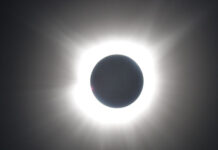In the June 1, 1962, issue of The Alpine Sun an article, titled “SDG&E has Birthday” read as follows: “Sunday was the 75th year of continuous service of electricity to the county for the SD Gas & Electric Co., which started in 1887 as the Coronado G&E Co. Then it made current for 24 street arc-lights, only from dusk to midnight, excluding moonlight nights! It had four 75-HP steam driven generators with only 30-light capacity. Cost then was 2¢ a lamp hour while today 2.81¢ gets a kilowatt hour capable of lighting 14 50-watt lamps! Today this fine company boasts of four modern power plants with 13 high efficiency turbo-generators capable of yielding 809,000 KW. They cost many millions and the firm is now building a second new 142,000 KW unit at its South Bay power plant soon to be operating. It has ordered a new 210,000 unit for 1964, the company’s largest, to keep pace with the fast growth of SD County.”
Fast forward to 2012. On June 18, SDG&E issued a news release that read, in part, as follows: “SDG&E today announced that it has completed and put into service the sunrise Powerlink, a 500,000-volt transmission line linking San Diego to the Imperial Valley, one of the most renewable-rich regions in California. The completion of the nearly $1.9 billion project culminates a rigorous, 5-year-long environmental review and permitting process and 18 months of construction that encompassed both overhead and underground technology as well as different climates and rough, remote terrain.”
The Sunrise Powerlink consists of more than 110 miles of overhead 500kV and 230kV transmission towers and conductor, 6.2 miles of underground 230kV cable and a 40-acre, 500kV transmission substation, which reduces the voltage for use by homes and businesses. More than 4.7 million work hours were required to complete the project—the equivalent of 2,260 people working 40 hours a week for a year. Because nearly 75 percent of the tower locations required helicopters to set the tower structures for environmental reasons, it took more than 28,000 flight hours to complete the aerial construction.
Capable of bringing initially up to 800 megawatts of additional imported power into San Diego, the Sunrise Powerlink will play an especially important role this summer, as the line was originally designed to do. The transmission line will eventually carry 1,000 megawatts of power, or enough energy to serve 650,000 homes. SDG&E and the California Independent System Operator, Corporation (ISO), the agency that manages most of the statewide grid, consider the Sunrise Powerlink one of the important mitigation measures that will help maintain electric reliability during heat waves without power from the San Onofre Nuclear Generating Station.
Construction highlights: 13,200 tons of steel = total weight of all 438 transmission structures (by comparison, the Coronado Bay Bridge contains 20,000 tons of steel), 1,135 miles of overhead high-voltage wire = from end to end would reach from San Diego to San Antonio, 438 tower foundations = concrete used would cover an entire football field to a depth of 12 feet, 1.3 million cubic yards of earth = enough to fill the Empire State Building.”
The transmission line winds across San Diego’s mountains, over reservoirs and our local eagle nesting grounds, then meanders down into the desert as far as the eye can see and finally ends up in a substation near El Centro. The debate about the Powerlink—pros and cons—will most likely continue for many years to come. Businesses and residents along Alpine Boulevard were impacted throughout the construction years; however, that is now behind us.
Hard to imagine—1962 to 2012—50 years and what tremendous change!
Carol Walker and her husband Paul lived in Alpine for 19 years. Carol is the webmaster and newsletter editor for the Alpine Historical Society. She can be reached at cwalker@alpinehistory.orgor 619-467-7766.













